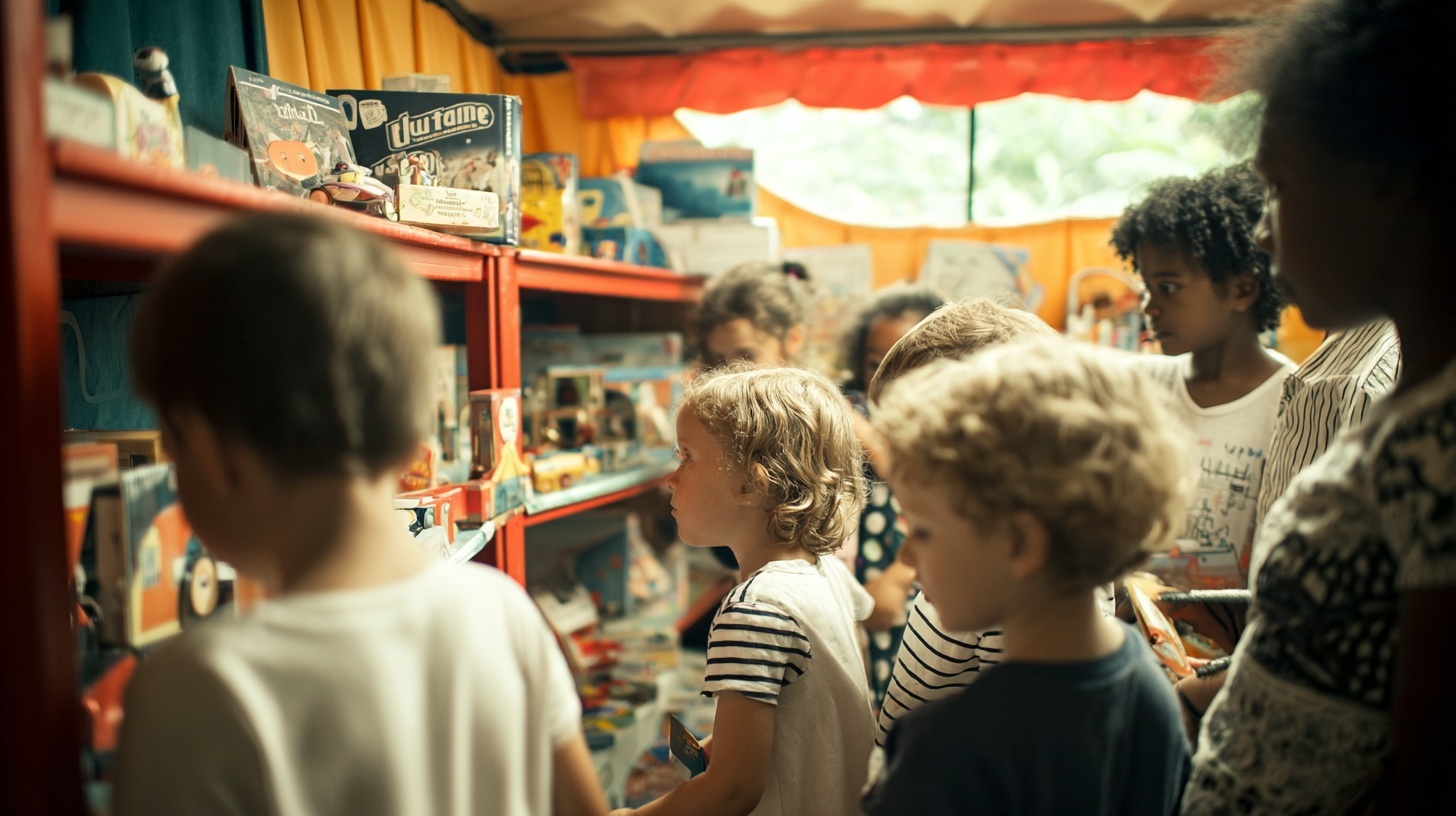By Futurist Thomas Frey
In 2025, a small but striking cultural signal emerged from the wealthiest neighborhoods of San Francisco and Singapore: about 1% of families stopped buying toys altogether. Instead, they subscribed to “toy libraries”—services that deliver rotating collections of educational play objects every two weeks, then retrieve them for cleaning, sorting, and redistribution. Parents described the change as liberating. The clutter vanished. The guilt of overconsumption disappeared. Most surprisingly, the kids played more. With each new rotation came novelty, curiosity, and renewed engagement. It was the first hint that permanent ownership—a core feature of 20th-century childhood—might be on its way out.
By 2040, that fringe experiment has become the norm. Only about 12% of households now own toys outright, and those that do are mostly collectors, nostalgists, or families in remote regions beyond logistics networks.
The global toy industry, once a $90 billion marketplace for brightly colored plastic, has transformed into a $340 billion “childhood development subscription” ecosystem. The focus is no longer on manufacturing physical objects but on designing evolving learning environments that adapt to a child’s mind in real time.
Each child has a digital developmental profile stored in a secure, adaptive AI system. It knows their learning style, preferred sensory modalities, and emotional triggers. It tracks their fine motor skills, attention span, spatial reasoning, and social preferences. Every ten days, an algorithm designs a new set of physical and digital play experiences calibrated to maximize cognitive growth, emotional balance, and creativity. The subscription box that arrives at the door isn’t filled with toys—it’s filled with opportunities for transformation.
Gone are the plastic bins overflowing with forgotten dolls and broken action figures. Gone are the toy aisles at department stores, now replaced by experience studios that allow parents and children to co-design “play modules” for upcoming rotations. The concept of “owning toys” feels as anachronistic as owning a phonebook. Kids still play—but they play differently. They explore worlds that adapt to their growth curve, challenge their curiosity, and anticipate their next leap in understanding.
Even gift-giving has changed. The birthday ritual that once revolved around boxes wrapped in paper has shifted toward “experience credits.” A grandparent no longer buys a toy; they upgrade a child’s subscription tier, unlocking richer sensory sets, expanded virtual playgrounds, or collaborative social play events. The focus has shifted from “what you have” to “what you can experience.” For an eight-year-old, “I had that toy as a kid” has become “I had that experience tier when I was eight.” Memory itself is now structured around cycles of exploration, not possessions.
The effects on development are profound. Psychologists report that children in subscription-based play systems show 40% higher sustained attention and 33% greater creative problem-solving scores compared to those who primarily use static toys. They’re less attached to material possessions and more adaptable to novelty. Educators note a measurable drop in boredom and an increase in self-directed learning. The home environment has evolved too—no longer a cluttered battleground of toys underfoot, but a dynamic learning studio refreshed weekly.
But the change isn’t without controversy. Critics worry that algorithmic play curation may homogenize creativity, turning childhood into a managed optimization process. If every experience is “perfectly tailored,” do children lose the messy, improvisational chaos that once sparked imagination? Some argue that the unpredictability of play—dumping a box of mismatched Lego bricks on the floor and inventing meaning—is essential for developing resilience. Others fear data privacy issues: who owns the lifelong developmental record of your child’s play behavior? Can corporations monetize it later?
Still, the shift appears irreversible. The subscription economy has infiltrated every layer of family life—from education to nutrition to clothing—and toys were simply the last frontier. For many parents, the tradeoff is worth it. They no longer need to predict what their child might enjoy or outgrow. The system learns faster than they can. The result is a generation of children whose childhoods are curated, personalized, and continuously evolving.
By 2040, toy brands have evolved into “childhood design firms.” LEGO sells algorithmic construction experiences that change difficulty based on a child’s recent problem-solving metrics. Mattel curates “imagination loops” that merge physical dolls with AI-driven story engines. Play-Doh’s subscription includes bio-safe compounds that change texture and scent to stimulate sensory development. The word “toy” itself feels inadequate to describe these creations. They’re not objects—they’re adaptive systems for growth.
The nostalgia economy, of course, fights back. Adults in their 30s and 40s—the last generation to have owned physical toys—collect vintage sets as reminders of tactile childhood. Toy museums become pilgrimage sites for the sentimental. Yet even nostalgia evolves: people don’t collect toys to use them—they collect them to remember what ownership felt like. For everyone under 20, play without personalization seems primitive, even strange.
Final Thoughts
The disappearance of toy ownership represents something much larger: the death of static experience. Children of 2040 grow up in a world that constantly adapts to them. Their environments evolve. Their play evolves. Their learning evolves. Permanence is no longer a virtue—it’s a limitation. When the world itself becomes intelligent, every object is temporary, every experience dynamic, and every childhood a unique algorithmic story.
Related Reading:
- The Death of Job Interviews
- The Retail Resurrection: The Death of Warehouses Gave Birth to Experiential Commerce


